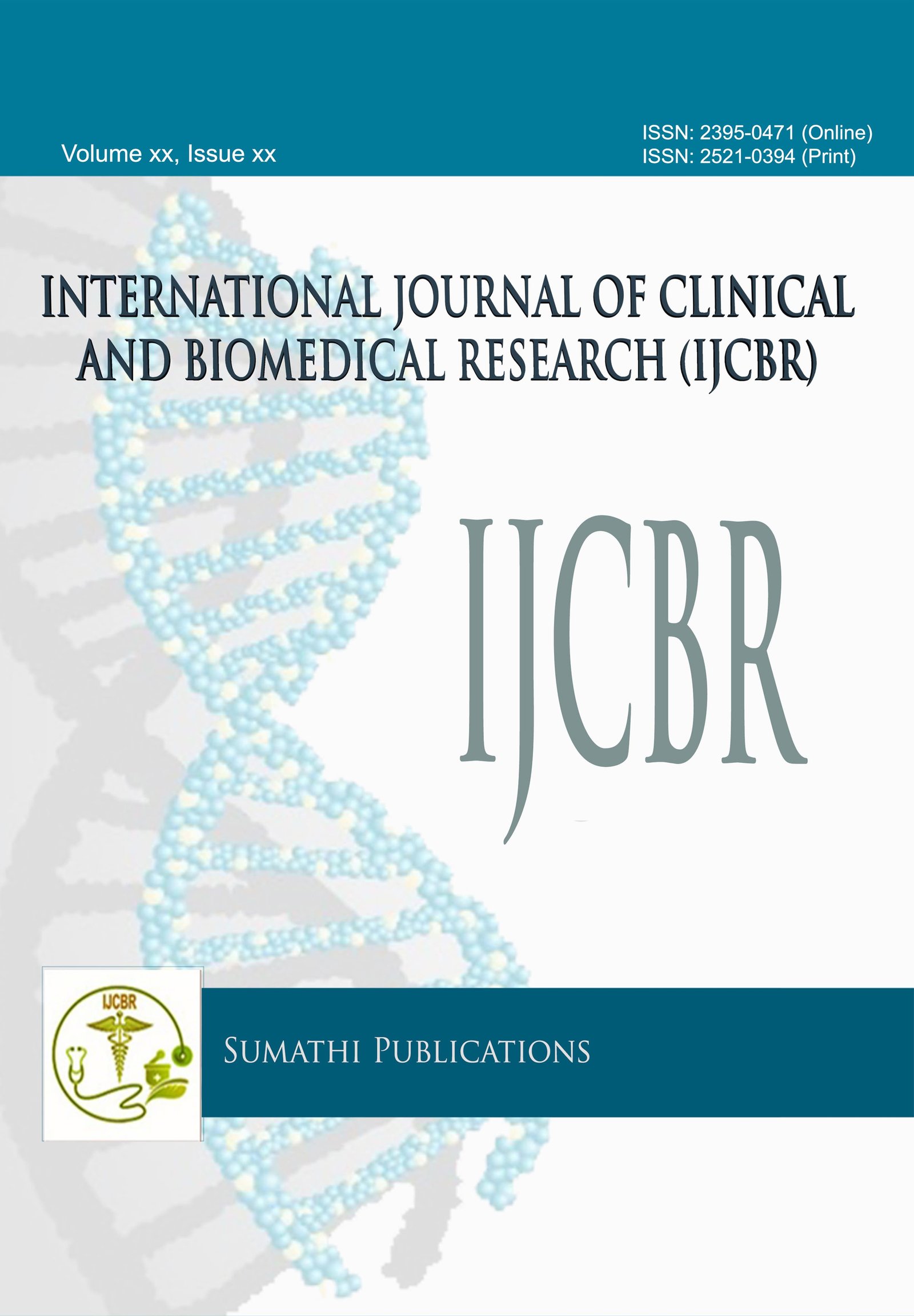MYCOLOGICAL PROFILE AND ANTIFUNGAL SENSITIVITY OF INFECTIVE KERATITIS IN A TERTIARY CARE HOSPITAL OF SOUTHERN ODISHA
DOI:
https://doi.org/10.5455/ijcbr.2018.41.05Abstract
Background: Infective keratitis is the second major cause of blindness next to cataract. Mycotic keratitis is an important ophthalmologic problem especially in developing countries including India. Fungal infection involving cornea is a fatal condition which needs early diagnosis and treatment to save the patient's eye. Though studies on mycotic keratitis have been reported from different part of India, to the best of our knowledge this study showing antifungal susceptibility is the first to be reported from Southern Odisha. Objective: The purpose of this study was to study epidemiological characteristics, predisposing factors, fungal etiology and antifungal susceptibility of common fungal isolates in infective keratitis cases. Materials and Methods: A prospective study was conducted from November 2015 to October2017 in the Department of Microbiology and Ophthalmology M.K.C.G Medical College and Hospital. Relevant information was recorded using standard proforma of keratitis cases. Corneal scrapings were collected under strict aseptic conditions and subjected to10% KOH mount, Gram stain and culture. Identification of fungal agents were done as per standard microbiological procedures. An antifungal sensitivity test was done by microbroth dilutions as per CLSI reference method. Results: Over a period of two years 149 patients of infective keratitis were evaluated. Microbiological diagnosis of mycotic keratitis was established in 39 (26.17%) cases. Filamentous fungi were isolated more often than yeasts. The most frequently encountered filamentous fungi and yeasts were Aspergillus spp. 14(35.89%) and Candida albicans 7 (17.94%) respectively. Males were more commonly affected and were mostly in the age group of 46-60 years. Ocular trauma due to vegetative matter was the most common predisposing factor. Natamycin was the most effective antifungal against filamentous fungi and amphotericin B was most effective for Candida albicans. Conclusion: Because of serious consequences of mycotic keratitis, it is very important to know the exact etiological agents and effective antifungals to save the eye of the patients. So laboratory confirmation should be undertaken and fungal infection should be ruled out before prescribing antimicrobial agents.
Downloads
Downloads
Published
Issue
Section
License
The journal allows the author(s) to hold the copyright without restrictions and will retain publishing rights without restrictions.
The submitted papers are assumed to contain no proprietary material unprotected by patent or patent application; responsibility for technical content and for protection of proprietary material rests solely with the author(s) and their organizations and is not the responsibility of the journal. The main (first/corresponding) author is responsible for ensuring that the article has been seen and approved by all the other authors. It is the responsibility of the author to obtain all necessary copyright release permissions for the use of any copyrighted materials in the manuscript prior to the submission.
What are my rights as an author?
It is important to check the policy for the journal to which you are submitting or publishing to establish your rights as
Author. Journal's standard policies allow the following re-use rights:
- The journal allows the author(s) to hold the copyright without restrictions.
- The journal allows the author(s) to obtain publishing rights without restrictions.
- You may do whatever you wish with the version of the article you submitted to the journal.
- Once the article has been accepted for publication, you may post the accepted version of the article on your own personal website, your department's website or the repository of your institution without any restrictions.
- You may not post the accepted version of the article in any repository other than those listed above (i.e. you may not deposit in the repository of another institution or a subject-matter repository) until 12 months after publication of the article in the journal.
- You may use the published article for your own teaching needs or to supply on an individual basis to research colleagues, provided that such supply is not for commercial purposes.









